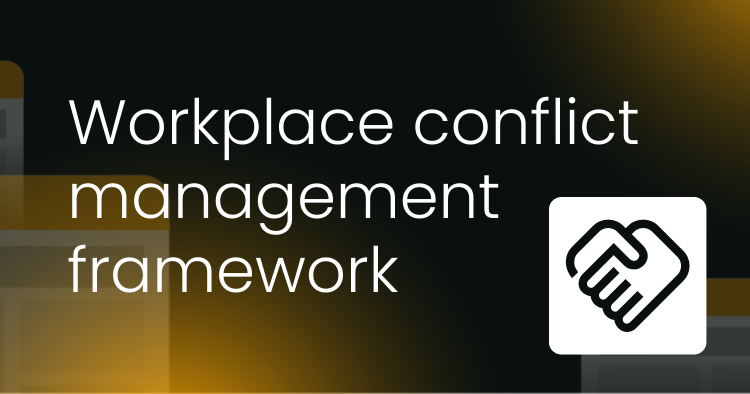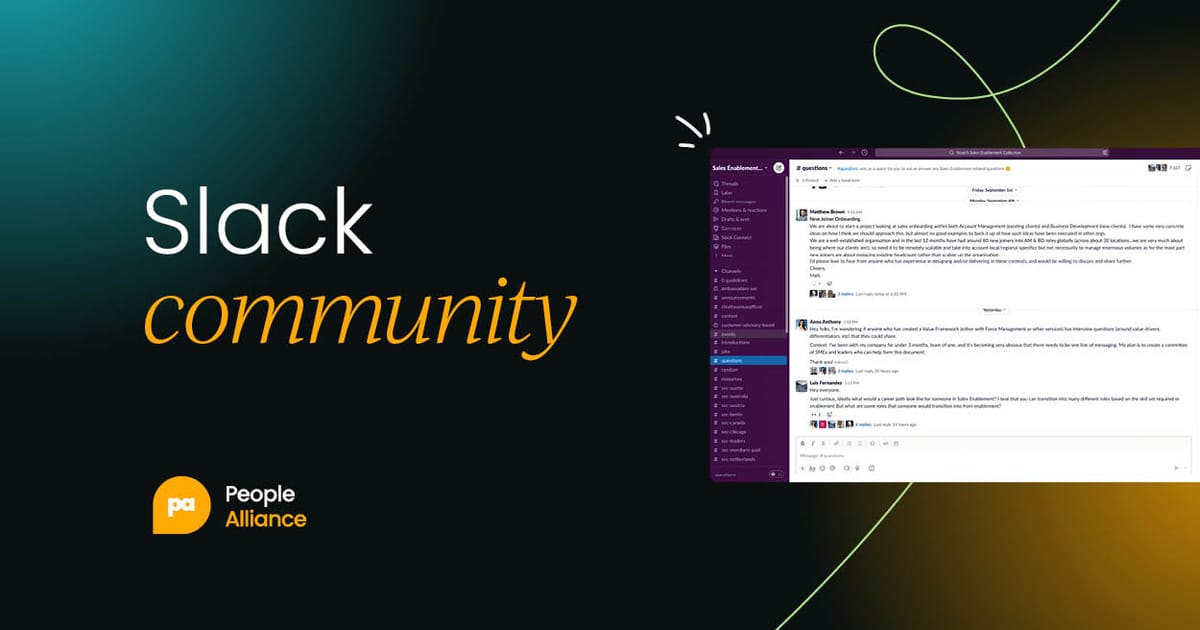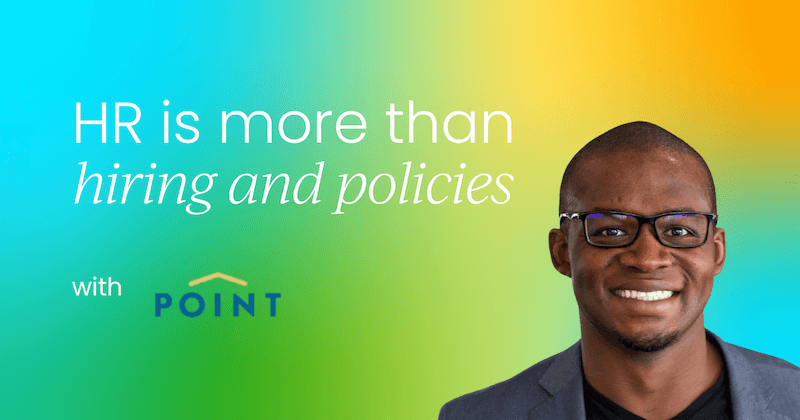I’ve spent years in the talent and people space, but I still find myself coming back to one simple truth: what we do in HR has the power to shape lives, both for better and for worse.
The systems we create, the way we hire, onboard, and nurture employees, and even the way we handle conflict all impacts not just a person’s job, but their sense of belonging, their well-being, and sometimes, their entire trajectory in life.
This isn’t an abstract concept for me. It’s deeply personal. And I want to share a story that, to this day, drives my passion for building organizations that feel like strong, supportive communities rather than cold, transactional workplaces.
The foundation we lay
Recently, I traveled to Tijuana, Mexico, with my 15-year-old daughter, Michaela, on a service trip with our church. Together with 200 other kids and 16 adults, we built 10 homes over the course of a week.
We slept in tents. We showered with solar-heated shower bags. We worked with no power tools, just shovels, sweat, and determination.
On the first day, we dug and poured foundations. It was exhausting work, but we all understood that if the foundation wasn’t solid, nothing we built on top of it would last.
We could fix mistakes in the walls, the roof, even the doors, but if the foundation was uneven or weak, the entire structure would be at risk.
As I shoveled gravel and mixed cement, I couldn’t help but think of HR. What we do as HR leaders is exactly this: we lay the foundation for our organizations.
If we fail to build strong structures for how people collaborate, resolve conflicts, and find meaning in their work, we risk creating instability that can affect everyone in the company.
Companies aren’t families. Families are permanent and unconditional. Companies are communities. A healthy community needs shared values, clear rules of engagement, and a culture that allows people to thrive.
HR is the builder and guardian of that community.
The human cost of a broken foundation
I wish I could say that I’ve only seen HR at its best. But one of the experiences that most shaped me as a leader was when I saw, up close, what happens when workplace foundations are weak. The human cost is devastating.
A few years ago, I was working at LinkedIn on a contract role, just as I was transitioning into recruiting. While there, I met a colleague named Joseph Thomas.
From the moment we met, we clicked. We had that rare “fast-track work best friend” connection. You know, the person you meet at work, and within a week, you’re like family.
Joseph was brilliant. He was a self-taught computer engineer, fluent in Cantonese and Mandarin, married to his high school sweetheart, and a devoted father to two young boys.
We’d have lunch together, our families spent time together, and I quickly realized how much I admired not just his intelligence but his character.
After a few months, I moved on to a role at Thumbtack, and Joseph accepted a job at Uber. He was excited. Uber had offered him a great salary and a huge signing bonus, which allowed him to buy a home in the East Bay. But soon, things took a dark turn.
A toxic work culture
Within weeks of starting, Joseph confided that his team was hostile. Some of his coworkers were openly undermining him, and, shockingly, his manager seemed to be encouraging it.
I advised him the best I could: Start by connecting with people, try to understand them, and if things don’t improve, escalate to HR. He followed my advice, but the situation only got worse.
When Joseph approached HR for help, he discovered that the HR team was socially entangled with his manager and team. His concerns weren’t taken seriously. He felt cornered, isolated, and powerless.
The last time I saw Joseph, he came to meet me at the Thumbtack office in San Francisco. He was no longer the confident, upbeat friend I’d known. He looked defeated, his spirit crushed.
I encouraged him to document everything, to try again with HR, to fight for the bonus he’d earned and the stability his family needed.

The call that changed everything
A week later, I got a call from Joseph’s wife. Joseph had taken his own life. Even now, writing these words feels surreal. I was devastated, not only because I’d lost a friend, but because I couldn’t shake the feeling that his workplace had contributed to his despair.
This experience taught me something I will never forget: the systems we build in HR are not just about compliance or performance, they're are about people’s lives.
When we fail to create safe, supportive environments, we risk pushing people to their breaking point.
We have a responsibility, a sacred one, to design workplaces that don’t just bring out the best in people when things are good, but that protect them when things are hard.
The why, who, and what framework
In HR, we spend a third of our lives thinking about work: how to hire, retain, and grow talent. But I believe we should also be asking three simple questions about why, who, and what:
- Why are we building this system?
Are we creating processes because they serve the business, or because they genuinely help people thrive? The “why” behind HR policies should always connect to both organizational success and human well-being. - Who are we becoming as we build?
Every decision we make as HR leaders reflects our values. Are we fostering a culture of empathy, transparency, and fairness? Are we modeling the kind of behavior we hope to see across the company? - What impact will this have?
Every program, every hire, every performance review has ripple effects. What kind of environment are we creating? Are we building a foundation strong enough to hold the weight of real human lives and all their complexity?
HR as the frontline of well-being
The past few years have tested everyone. We’ve lived through layoffs, economic uncertainty, and a global pandemic that isolated us and heightened mental health challenges.
Through all of this, HR has been on the front lines, not just managing processes, but holding the emotional weight of entire organizations.
This is why self-care and mental resilience are not luxuries for HR leaders. They’re essential. You can’t pour a strong foundation for others if your own ground is crumbling.
I’ve learned from both personal experience and research (including the work of experts like Dr. Joe Dispenza and Deepak Chopra) that mental practices shape reality. Athletes visualize success before they perform. Pilots mentally rehearse their flights. As HR leaders, we can do the same.
Take time to mentally “walk through” the systems you want to build. Imagine how it feels for an employee to interact with them. What emotions are you inspiring? Frustration and fear? Or clarity, safety, and growth?
A simple mental exercise
Let me share a quick exercise that I often use to reset my mindset.
Close your eyes. Take a deep breath. Mentally walk through your day, from waking up to the moments you’re living right now.
Then, imagine the interactions you’ll have after work, whether that’s meeting family, walking your pet, or attending a happy hour. Ask yourself: How do I want to feel? How do I want others to feel when they interact with me?
This isn’t about perfection. It’s about intentionality. When we visualize the energy we want to bring into our spaces, we create a ripple effect that changes not just us, but those around us.
Work as a third of our lives
The average person will spend around 90,000 to 100,000 hours working over the course of their life. That’s one-third of our time on Earth. HR leaders are the architects of how meaningful (or miserable) those hours will be.
Think about that. One-third of a person’s life is spent in systems we create. When we build thoughtfully, we give people more than a job. We give them community, growth, and purpose.
Final reflections
I’ll never forget Joseph’s story. It fuels my mission every single day. As HR and talent leaders, we have a sacred responsibility to create workplaces that honor both the business and the humanity of the people within it.
When we design systems, we must remember:
- We are building foundations that must be strong enough to handle both success and conflict.
- We are shaping communities where people should feel safe to grow, contribute, and, yes, even disagree.
- We must be intentional, empathetic, and bold enough to address the human side of work, not just the business metrics.
In startups, where chaos and creativity are often intertwined, this is especially important. The systems we build for people must be as intentional as the products we launch.
So I leave you with this: What kind of foundation are you laying? And when someone looks back at their time in your organization, will they say it gave them purpose or pain?
This article is based on Mawulom Nenonene's brilliant talk at the 2025 Chief People Officer Summit in Silicon Valley.
You don't have to go at it alone... Join our growing community of people leaders, from HR pros to Chief People Officers, and get inspired by success stories, share and get advice, and so much more.




 Follow us on LinkedIn
Follow us on LinkedIn


